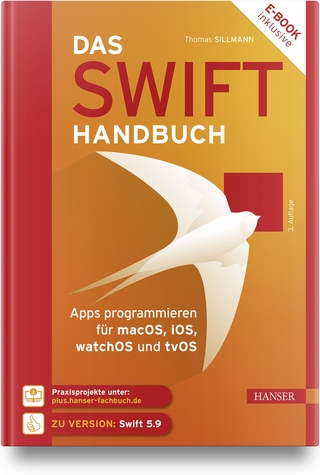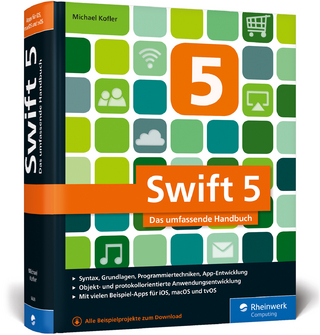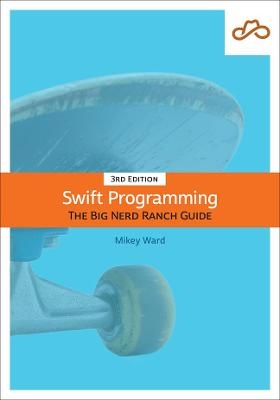
Cocoa Recipes for Mac OS X
Peachpit Press Publications (Verlag)
978-0-321-67041-0 (ISBN)
- Titel ist leider vergriffen;
keine Neuauflage - Artikel merken
Springing from the original Vermont Recipes Web site, where many of today’s Cocoa developers got their start, Cocoa Recipes for Mac OS X, Second Edition is a programming cookbook that shows you how to create a complete Mac OS X application. In this updated edition, author Bill Cheeseman employs a practical, step-by-step method for building a program from start to finish using the Cocoa frameworks. He begins by creating the project using Xcode and designing and building the user interface with Interface Builder, and then he fills in the details expected of any working application, such as managing documents and windows, setting up the main menu, and configuring controls. Later recipes show you how to add important features such as a preferences window, printing, a Help book, and AppleScript support. The book concludes with a discussion of deployment of your finished product and steps you can take to explore additional features. Equipped with the expertise and real-world techniques in this book, programmers with some knowledge of C and Objective-C can quickly master the craft of writing Cocoa programs for Mac OS X.
Written for C and Objective-C programmers who want to tap the extraordinary power and flexibility designed into the Cocoa frameworks, as well as for experienced Cocoa developers looking to extend their skills.
By following the book’s recipes for creating a complete Cocoa application, readers can retrace the same steps to write any document-based Cocoa program.
Includes the latest techniques for writing Cocoa applications for Mac OS X v10.6 Snow Leopard.
Project source files are available on the Web at www.peachpit.com/cocoarecipes.
Bill Cheeseman lives in Quechee, Vermont, and is the owner and principal of Quechee Software (www.quecheesoftware.com), which specializes in Mac OS X Cocoa application development and AppleScript and GUI Scripting development. In addition to writing the first edition of this book, Bill co-authored Apple Training Series: AppleScript 1-2-3. He has been well known in the AppleScript and Cocoa development communities for years for his work on The AppleScript Sourcebook Web site and as the author of the famous Vermont Recipes tutorials. In his spare time, Bill is a well-known trial lawyer.
Introduction. xi
About Vermont Recipes
Why Cocoa?
Why Objective-C?
Naming Conventions
Apple’s Cocoa Documentation
Xcode and Interface Builder
New Technologies
The Vermont Recipes Application Specification
Downloading and Installing the Project Files
Section 1: Objective-C and the Cocoa Frameworks
Ingredients: Language, Frameworks, and Tools
Appliances and Utensils
Ingredients
Serving Suggestions
Section 2: Building an Application
Recipe 1: Create the Project Using Xcode
Step 1: Create the New Project
Step 2: Explore the Project
Step 3: Set Xcode Preferences
Step 4: Revise the Document’s Header and Implementation Files
Step 5: Rename the Document’s Files
Step 6: Edit the Document’s Methods
Step 7: Create and Revise the Window Controller Files
Step 8: Edit the Credits File
Step 9: Edit the Info.plist File
Step 10: Edit the InfoPlist.strings File
Step 11: Create a Localizable.strings File
Step 12: Set the Project’s Properties and Build Settings
Step 13: Build and Run the Application
Step 14: Save and Archive the Project
Conclusion
Recipe 2: Design and Build the GUI Using Interface Builder
Step 1: Explore and Revise the Document Window’s Nib File
Step 2: Add a Toolbar
Step 3: Add a Vertical Split View
Step 4: Add a Horizontal Split View
Step 5: Add a Tab View
Step 6: Add a Drawer
Step 7: Add a Toolbar Item to Open and Close the Drawer
Step 8: Build and Run the Application
Step 9: Save and Archive the Project
Conclusion
Recipe 3: Create a Simple Text Document
Step 1: Create the DiaryDocument Class in Xcode
Step 2: Save a Snapshot of the Project
Step 3: Create the DiaryWindowController Class and Its Nib File in Interface Builder
Step 4: Add Scrolling Text Views to the Diary Window
Step 5: Create the VRDocument-Controller Class and a New Menu Item
Step 6: Add the Diary Document to the Info.plist File
Step 7: Read and Write the Diary Document’s Text Data
Step 8: Configure the Split View Diary Window
Step 9: Build and Run the Application
Step 10: Save and Archive the Project
Conclusion
Recipe 4: Add Controls to the Document Window
Step 1: Add Controls to the Diary Window
Step 2: Implement the Add Entry Push Button
Step 3: Implement the Add Tag Push Button
Step 4: Validate the Add Tag Push Button
Step 5: Implement and Validate the Navigation Buttons
Step 6: Implement and Validate the Date Picker
Step 7: Implement and Validate the Search Field
Step 8: Build and Run the Application
Step 9: Save and Archive the Project
Conclusion
Recipe 5: Configure the Main Menu
Step 1: Create the VRApplicationController Class
Step 2: Add a Read Me Menu Item to the Help Menu
Step 3: Add a Diary Menu to Control the Diary Window
Step 4: Add a Diary Tag Search Menu Item to the Find Submenu
Step 5: Add a Recipe Info Menu Item to Open the Recipes Window’s Drawer
Step 6: Build and Run the Application
Step 7: Save and Archive the Project
Conclusion
Recipe 6: Control the Document’s Behavior
Step 1: Organize the Project’s Code
Step 2: Limit the Application to a Single Diary Document
Step 3: Add Error Handling to the Diary Document
Step 4: Prepare Localizable Strings for Internationalization
Step 5: Build and Run the Application
Step 6: Save and Archive the Project
Conclusion
Recipe 7: Refine the Document’s Usability
Step 1: Set the Minimum and Maximum Sizes of the Document Windows
Step 2: Set the Initial Position and Size of the Document Windows
Step 3: Set the Standard Zoom Size of the Document Windows
Step 4: Autosave the Position and Size of the Document Windows
Step 5: Autosave the Position of the Divider in the Diary Window
Step 6: Autosave the Recipes Document’s Toolbar Configuration
Step 7: Autosave the Diary Document’s Contents
Step 8: Back Up the Diary Document
Step 9: Implement the Revert to Saved Menu Item
Step 10: Build and Run the Application
Step 11: Save and Archive the Project
Conclusion
Recipe 8: Polish the Application
Step 1: Add a Save As PDF Menu Item
Step 2: Use Alternating Show Recipe Info and Hide Recipe Info Menu Items
Step 3: Use a Dynamic Add Tag and Tag All Menu Item
Step 4: Use a Dynamic Add Tag and Tag All Button
Step 5: Use Blocks for Notifications
Step 6: Add Help Tags
Step 7: Add Accessibility Features
Step 8: Provide a Default Diary Document Name
Step 9: Add Support for Sudden Termination
Step 10: Internationalize the Application’s Display Name
Step 11: Add Application and Document Icons
Step 12: Enable the Application to Run Under Leopard
Step 13: Build and Run the Application
Step 14: Save and Archive the Project
Conclusion
Recipe 9: Add Printing Support
Step 1: Create a Print Panel Accessory View in Interface Builder
Step 2: Create an Accessory View Controller in Xcode
Step 3: Add the Accessory View Controller to the Print Panel
Step 4: Save Custom Print Settings
Step 5: Create a Print View to Print the Document’s Content
Step 6: Print Custom Headers and Footers
Step 7: Implement Print Scaling
Step 8: Build and Run the Application
Step 9: Save and Archive the Project
Conclusion
Recipe 10: Add a Preferences Window
Step 1: Design and Build a Preferences Window in Interface Builder
Step 2: Create a Preferences Window Controller in Xcode
Step 3: Configure the General Tab View Item
Step 4: Configure the Recipes Tab View Item
Step 5: Configure the Chef’s Diary Tab View Item
Step 6: Build and Run the Application
Step 7: Save and Archive the Project
Conclusion
Recipe 11: Add Apple Help
Step 1: Implement an HTML-Based Apple Help Bundle for Snow Leopard
Step 2: Add Topic, Task, and Navigation Pages
Step 3: Add an AppleScript Link to a Topic Page
Step 4: Use the HelpViewer help: Protocol
Step 5: Add Keywords and Abstracts
Step 6: Add Help Buttons to Alerts, Dialogs, and Panels
Step 7: Advanced Help Features
Step 8: Implement a Help Book for Leopard and Earlier
Step 9: Build and Run the Application
Step 10: Save and Archive the Project
Conclusion
Recipe 12: Add AppleScript Support
Step 1: Create a Terminology Dictionary and Add the Standard Suite
Step 2: Add the Vermont Recipes Suite and Extend the Application Class With a New Property
Step 3: Add a Diary Document Class and a Property in the Application to Access It
Step 4: Add the Text Suite and a Document Text Property
Step 5: Add a Diary Entry Class and an Element in the Diary Document to Access It
Step 6: Add Properties to Get and Set Diary Entry Values
Step 7: Add a Current Diary Entry Property to the Document Class
Step 8: Support the Make Command for New Diary Entries
Step 9: Support the Delete Command for Diary Entries
Step 10: Add a Custom Verb-First Command–Sort
Step 11: Add Custom Object-First Commands–Encrypt and Decrypt
Step 12: Move Along
Step 13: Build and Run the Application
Step 14: Save and Archive the Project
Conclusion
Recipe 13: Deploy the Application
Step 1: Build the Application for Release
Step 2: Test the Application
Step 3: Provide Documentation
Step 4: Provide User Support
Step 5: Distribute the Application
Step 6: Promote the Application
Conclusion
Section 3: Looking Ahead
Recipe 14: Add New Technologies
Step 1: Switch to Properties
Step 2: Switch to Cocoa Bindings
Step 3: Switch to Garbage Collection
Conclusion
| Erscheint lt. Verlag | 1.4.2010 |
|---|---|
| Verlagsort | Berkeley |
| Sprache | englisch |
| Maße | 227 x 179 mm |
| Gewicht | 990 g |
| Themenwelt | Informatik ► Programmiersprachen / -werkzeuge ► Mac / Cocoa Programmierung |
| ISBN-10 | 0-321-67041-8 / 0321670418 |
| ISBN-13 | 978-0-321-67041-0 / 9780321670410 |
| Zustand | Neuware |
| Haben Sie eine Frage zum Produkt? |
aus dem Bereich


